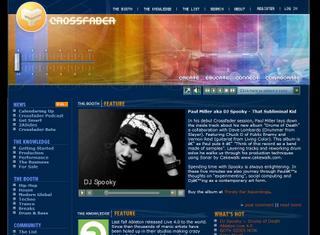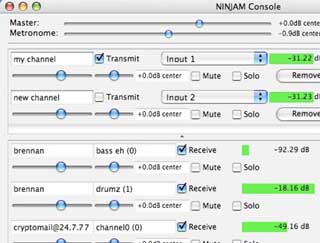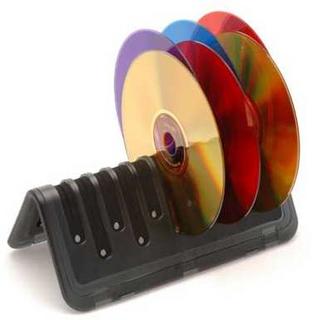| |
 The APA is a hardware solution that lets you easily run multiples of Waves’ most CPU-intensive plug-ins. For example, the APA32 lets you run 6 IR-1 Reverbs, or 9 Linear Phase Equalizers, or 12 C4 Multiband Parametric Processors at 44.1KHz. The APA44-M is even more powerful, giving you up to 30% more plug-in power than the APA32. What’s more, the APA units don’t require a PCI card or a Firewire or USB connection. You simply connect them to a standard Ethernet port, install the new NetShell software, and cut loose. The APA32 is a 1U rack-mount unit for studio. The APA44-M is a half-rack unit that features up to 30% more processing power and nearly silent operation, and is ideal for mobile use. A kit enables two APA units to be mounted in a 1U rack space. The APA units are connected to the host computer via a standard Ethernet port. Up to eight units can be used together with an Ethernet switch. The units can also be shared among several DAW workstations via a suitable V-LAN configuration, with each workstation accessing up to eight APA units. The APA system uses Waves new Netshell software, which is included in every new Waves bundle that contains Netshell-compatible plug-ins. No special authorization is required for Netshell or for an APA unit; APA users just need to update their authorized Waves plug-ins to Netshell supported versions, and they're ready to go. This represents a major step forward from conventional DSP approaches that require a card in the computer or that are tied to one particular system.
 
 Microsoft launches Crossfader : a site about electronic music !!! Of course it's more a marketing choice, as there is nothing interresting there and no updating since one month. But when Microsoft do something, it's for money...so...
 
You must really go here if you are lost into electronic music.
 
Wee arrre the rrrobotsss
A lot of elctronic music band have used speech synthesis in their songs : Kraftwerk, LFO, Depeche mode, and others... The speak & spell TI toy is far away the most used speech synthesizer. To expand its possibilities you can interface it to a computer or make some circuit-bending.  You can try also the very rare Radio shack TRS-80 voice synthesizer (i bought one a few days ago and it sounds very vintage). Some software make the deal : the Analog-x say-it or the free naturalreader. Let's have a look here : http://www.research.att.com/projects/tts/demo.htmlThere are also some interessing hardware : the TTS-03 TextSpeak Module, the humanware VoiceNote mPower QT, but far away the best seems to be the Magnevation Speakjet .  The SpeakJet is a completely self-contained, single-chip voice and complex sound synthesizer. It uses a mathematical sound algorithm to control an internal 5 channel sound synthesizer to generate "on- the-fly" unlimited-vocabulary speech synthesis and complex sound generation. The SpeakJet is programmed with 72 speech sound elements called allophones, 43 predefined sound effects and 12 DTMF touch Tones. Through the selection of these sounds and in combination with the control of the Pitch, Rate, Bend and Volume parameters, the user has the ability to produce unlimited phrases and sound effect with thousands of variations at any time. The SpeakJet can be controlled simultaneously by voltage changes on any one of its 8 input lines and by a single serial output line from a CPU. I have caught one from the Parallax web-site with a Tigerbotics devellopement boardand a basicstamp CPU : The chip sounds very good with delicious robotic feeling. I plan to make a computer controlled musical speech synthesizer with it, so stay tuned...
 
 Look at this portable cardboard speaker, as the guy who made it says : " I think this puts most portable to shame - the ipod deals included- maybe not the high end Bose or Cambridge - but then again this cost me less then $15 bucks. Its loud and acceptably accurate for what it is not to mention the bass response is 10x that of what even 4 2.5" cones can reproduce. The handle makes it ultra portable and hey it just looks freakin cool "
 
 NINJAM is a program to allow people to make real music together via the Internet. Every participant can hear every other participant. Each user can also tweak their personal mix to his or her liking. NINJAM uses compressed audio which allows it to work with any instrument or combination of instruments. You can sing, play a real piano, play a real saxophone, play a real guitar with whatever effects and guitar amplifier you want, anything. If your computer can record it, then you can jam with it. Since the inherent latency of the Internet prevents true realtime synchronization of the jam2, and playing with latency is weird (and often uncomfortable), NINJAM provides a solution by making latency (and the weirdness) much longer. Latency in NINJAM is measured in measures, and that's what makes it interesting. The NINJAM client records and streams synchronized intervals of music between participants. Just as the interval finishes recording, it begins playing on everyone else's client. So when you play through an interval, you're playing along with the previous interval of everybody else, and they're playing along with your previous interval. If this sounds pretty bizarre, it sort of is, until you get used to it, then it becomes pretty natural. In many ways, it can be more forgiving than a normal jam, because mistakes propagate differently.
 
 This is really not a news but i guess this one could be the next hype this summer in Ibiza. For now this prototype Noise Shirt has a microphone that measures the surrounding environments noise level and displays it as a vertical 5 step equalizer bar with the LEDs. Each LED marks a rise above a certain decibel level. The three lower LEDs go from 65dB to 84dB. The top two LEDs mark a noise level exceeding 85dB and 100dB. Continuous exposure exceeding 85dB is the limit set by the European Union for recommended use of hearing protection.
 
When you want to digitalize vinyl, and i'm sure that you want, the main problem is to interface phono and line level : you can use your mixer preamp but ART is giving us two news and better solutions :  The DJ PRE II acts as an interface between your turntable and your sound card. The analog input capacitance can be switched between 100pF and 200pF to optimize your phono cartridge response. A switchable low cut filter removes turntable rumble. The front gain trim control and signal/clip LED allow you to optimize the preamp's gain for a wide range of input sources. The built-in low noise phono preamp circuitry conforms to the RIAA standard. The line output jacks are low impedance and can be used with any sound card.  The USB Phono Plus is a USB audio interface with a standalone Phono preamplifier. It acts as an interface between your computer and a wide variety of analog and digital sources. The analog inputs are switchable between Phono and Line level signals and a low cut filter removes rumble and wind noise while leaving the audio pristine. The front gain trim control and signal/clip LED allow you to optimize the A/D for a wide range of input sources. The front panel USB monitor/headphone jack and the optical output on the rear panel can monitor audio output from your computer. The built-in low noise Phono preamp circuit is highly accurate and precisely conforms to the RIAA standard. The Line Output jacks are always connected to the input preamps signal for source monitoring. Housed in an all aluminum black anodized case, the USB Phono Plus can be powered by either an external power source or directly off the USB port so remote recording is a snap. Optical TOSLINK inputs and outputs as well as S/PDIF inputs let you use the USB Phono Plus as a digital audio to USB interface as well.
 
|
|


























